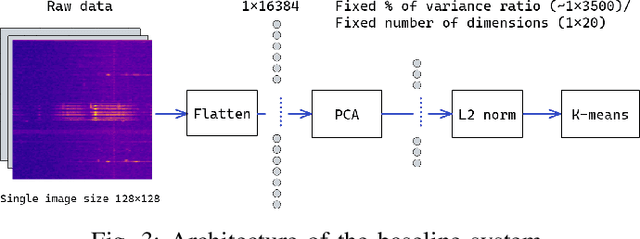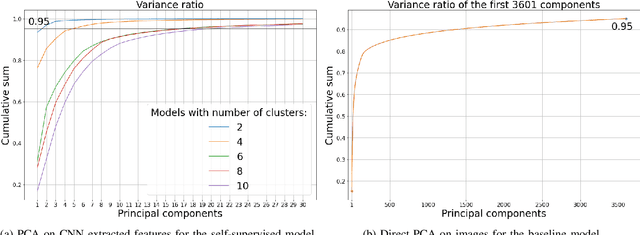Ljupcho Milosheski
Deep Feature Learning for Wireless Spectrum Data
Aug 07, 2023Abstract:In recent years, the traditional feature engineering process for training machine learning models is being automated by the feature extraction layers integrated in deep learning architectures. In wireless networks, many studies were conducted in automatic learning of feature representations for domain-related challenges. However, most of the existing works assume some supervision along the learning process by using labels to optimize the model. In this paper, we investigate an approach to learning feature representations for wireless transmission clustering in a completely unsupervised manner, i.e. requiring no labels in the process. We propose a model based on convolutional neural networks that automatically learns a reduced dimensionality representation of the input data with 99.3% less components compared to a baseline principal component analysis (PCA). We show that the automatic representation learning is able to extract fine-grained clusters containing the shapes of the wireless transmission bursts, while the baseline enables only general separability of the data based on the background noise.
XAI for Self-supervised Clustering of Wireless Spectrum Activity
May 17, 2023Abstract:The so-called black-box deep learning (DL) models are increasingly used in classification tasks across many scientific disciplines, including wireless communications domain. In this trend, supervised DL models appear as most commonly proposed solutions to domain-related classification problems. Although they are proven to have unmatched performance, the necessity for large labeled training data and their intractable reasoning, as two major drawbacks, are constraining their usage. The self-supervised architectures emerged as a promising solution that reduces the size of the needed labeled data, but the explainability problem remains. In this paper, we propose a methodology for explaining deep clustering, self-supervised learning architectures comprised of a representation learning part based on a Convolutional Neural Network (CNN) and a clustering part. For the state of the art representation learning part, our methodology employs Guided Backpropagation to interpret the regions of interest of the input data. For the clustering part, the methodology relies on Shallow Trees to explain the clustering result using optimized depth decision tree. Finally, a data-specific visualizations part enables connection for each of the clusters to the input data trough the relevant features. We explain on a use case of wireless spectrum activity clustering how the CNN-based, deep clustering architecture reasons.
Self-supervised Learning for Clustering of Wireless Spectrum Activity
Sep 22, 2022



Abstract:In recent years, much work has been done on processing of wireless spectral data involving machine learning techniques in domain-related problems for cognitive radio networks, such as anomaly detection, modulation classification, technology classification and device fingerprinting. Most of the solutions are based on labeled data, created in a controlled manner and processed with supervised learning approaches. Labeling spectral data is a laborious and expensive process, being one of the main drawbacks of using supervised approaches. In this paper, we introduce self-supervised learning for exploring spectral activities using real-world, unlabeled data. We show that the proposed model achieves superior performance regarding the quality of extracted features and clustering performance. We achieve reduction of the feature vectors size by 2 orders of magnitude (from 3601 to 20), while improving performance by 2 to 2.5 times across the evaluation metrics, supported by visual assessment. Using 15 days of continuous narrowband spectrum sensing data, we found that 17% of the spectrogram slices contain no or very weak transmissions, 36% contain mostly IEEE 802.15.4, 26% contain coexisting IEEE 802.15.4 with LoRA and proprietary activity, 12% contain LoRA with variable background noise and 9% contain only dotted activity, representing LoRA and proprietary transmissions.
 Add to Chrome
Add to Chrome Add to Firefox
Add to Firefox Add to Edge
Add to Edge